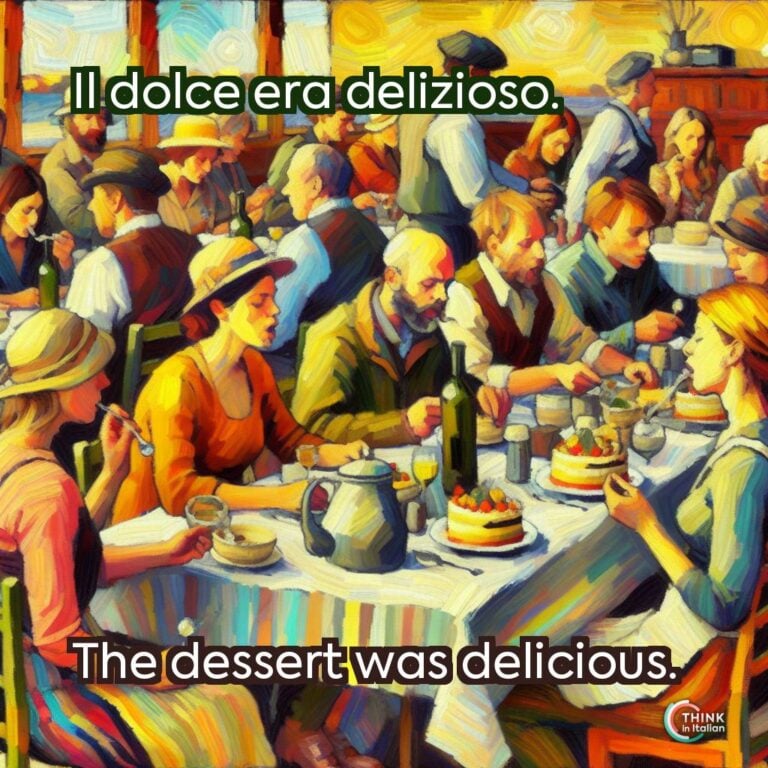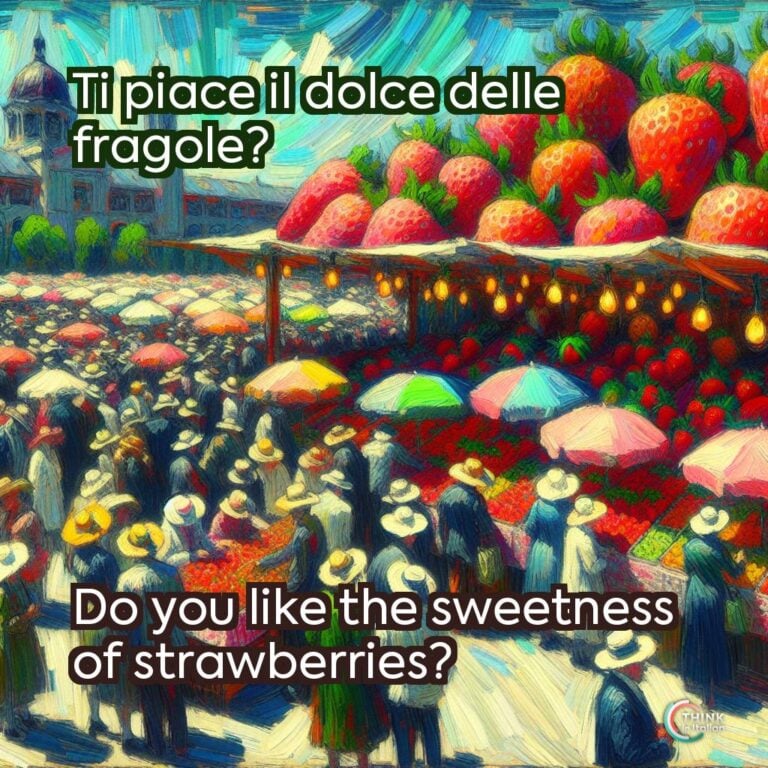“Dolce” in Italian
“Dolce”: Meaning
I am sure you know the very famous Italian expression la dolce vita. It is a straightforward example of how the Italian word dolce can embody an array of sensory and emotional experiences.
Its primary translation is “sweet”, but it extends beyond just flavor. It can include elements of aesthetics, emotions, and even physical properties.
This versatility makes the word dolce an important term in both everyday conversation and more nuanced discussions. Here, I will show you its different meanings and contextual uses.
“Dolce”: Grammar
Grammatically speaking, dolce can be used as an adjective or as a noun.
- Dolce as an adjective changes its form based on number but not on to gender:
- un mandarino dolce (masculine, singular) – a sweet tangerine
- una fragola dolce (feminine, singular) – a sweet strawberry
- dei mandarini dolci (masculine, plural) – sweet tangerines
- delle fragole dolci (feminine, plural) – sweet strawberries
- Dolce as a noun is a masculine noun meaning “dessert” or “sweetness” as a flavor. The term “dessert” is also used, but dolce is more common.
Vuoi ordinare un dolce?
Do you want to order a dessert?
Il dolce far niente.
The sweetness of doing nothing.
How to Use “Dolce” in Italian
Taste and Flavors
In its most straightforward sense, dolce refers to foods that are sweet to taste, such as fruits, desserts, or beverages. for example:
Questa fragola era molto dolce.
This strawberry was very sweet.
Aesthetic and Emotional Appeal
Beyond taste, dolce can describe pleasant and agreeable things. For example:
Quel ragazzo ha un sorriso dolce.
That guy has a sweet smile.
Mi piace fare gesti dolci per le persone che amo.
I like doing sweet gestures for the people I love.
Idiomatic and Figurative Uses
Dolce appears in several well-known Italian idioms, such as:
- casa dolce casa – home sweet home
- la dolce vita – the sweet life
- la mia dolce metà – my other half
- essere in dolce attesa – to be pregnant
- essere al dolce – to have just finished a meal






